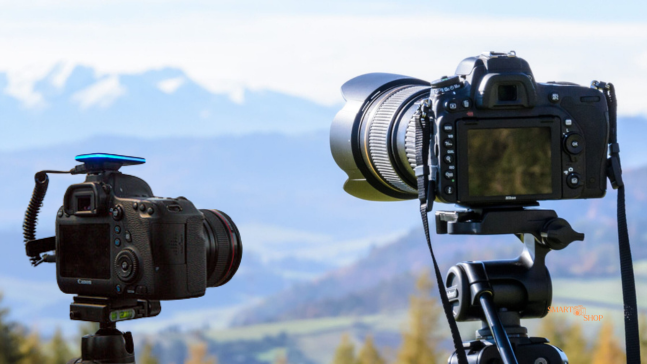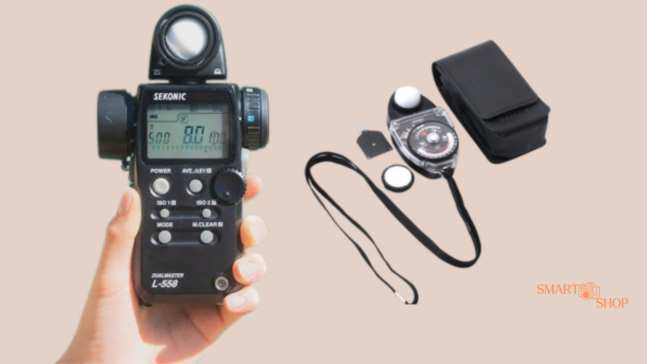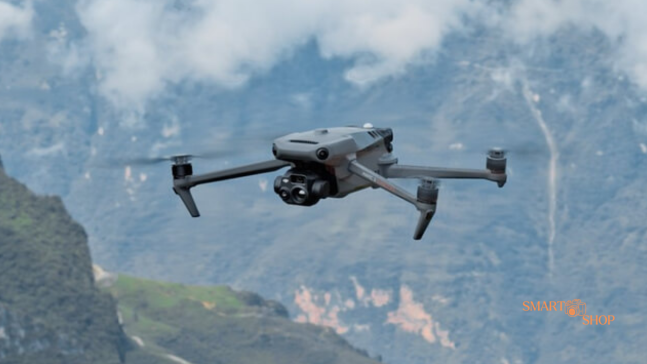The best compact camera for landscape photography is the Sony RX100 VII or the Canon G1 X Mark III. When it comes to landscape photography, the camera you choose can make all the difference.
While DSLRs may offer the most control, compact cameras are perfect for those who want to travel light and still capture stunning landscapes. But with so many options available, how do you know which one to choose? We’ll take a closer look at the Sony RX100 VII and the Canon G1 X Mark III, two of the best compact cameras for landscape photography.
We’ll explore its features, image quality, and design to help you make the right choice.
Key Considerations When Choosing A Compact Camera For Landscape Photography
Selecting a compact camera for landscape photography requires careful consideration of image quality, lens type and focal length, sensor size, and other vital features. The best compact camera for this purpose should be lightweight and portable but pack a punch in terms of resolution, zoom, and dynamic range to easily capture stunning landscape images.
When it comes to capturing stunning landscapes, having the right tools can make all the difference. For photographers on the go, compact cameras offer a convenient, lightweight option for capturing the beauty of nature. However, several key considerations must be kept in mind when choosing a compact camera for landscape photography. In this article, we’ll go over the essential factors to consider, including sensor size, lens quality, ISO range, dynamic range, weather sealing, size, weight, and price.
Sensor Size
Sensor size is a fundamental factor to consider when choosing a compact camera for landscape photography. A larger sensor size allows the camera to capture more light and reduce noise, resulting in better image quality. Most compact cameras have sensors that are 1 inch or smaller, but some premium models have larger sensors. If image quality is a top priority, consider investing in a compact camera with a larger sensor.
Lens Quality
The lens is another critical factor to consider when choosing a compact camera for landscape photography. Look for a camera with a high-quality lens, preferably with a wide-angle focal length, to capture more of the landscape. Some compact cameras offer a fixed lens, while others offer interchangeable lenses, allowing you to choose the best lens for the scene.
Iso Range
The ISO range determines the camera’s sensitivity to light. A higher ISO range is ideal for low-light conditions but can also introduce unwanted noise and compromise image quality. Look for a compact camera with a wide ISO range that can be adjusted to suit various lighting conditions.
Dynamic Range
Dynamic range is the camera’s ability to capture both bright highlights and dark shadows in a single image. A camera with a high dynamic range can produce more detailed and balanced images, providing more flexibility and post-processing options. Some compact cameras have built-in HDR (high dynamic range) modes that automatically combine multiple images to produce a more comprehensive dynamic range.
Weather Sealing
When photographing landscapes, you are likely to encounter different weather conditions. Look for a compact camera with weather sealing to protect it from rain, dust, and other elements. A weather-sealed camera can withstand harsh environments, allowing you to take photos in any conditions.
Size And Weight
One of the main advantages of a compact camera is its size and weight. Consider your travel needs and choose a camera that is lightweight and portable. However, keep in mind that smaller cameras may compromise some features, such as sensor size or lens quality.
Price
Compact cameras are available in various price ranges, from budget options to premium models. When choosing a camera, consider your budget and the features that matter most to you. Keep in mind that investing in a high-quality compact camera can provide better image quality and versatility, allowing you to capture stunning landscapes for many years to come.
Top 5 Compact Cameras For Landscape Photography
Capture stunning landscapes with these 5 best compact cameras. From Canon’s PowerShot G5
Landscape photography is about capturing the beauty of nature in a single frame. It requires a camera that can capture stunning images even in low light conditions and has a wide focal length. Compact cameras are an excellent option as they are easy to handle and offer outstanding image quality. Here are the 5 best compact cameras for landscape photography.
Sony Rx100 Vii
Sony RX100 VII is the perfect choice for landscape photographers who are always on the go. This camera comes with a 24-200mm lens, making it ideal for capturing wide-angle and telephoto views. The built-in image stabilisation feature minimises camera shake, resulting in sharper images. Its advanced autofocus system makes it easy to capture fast-moving subjects.

Canon Powershot G1 X Mark Iii
Canon PowerShot G1 X Mark III is a powerful compact camera with exceptional image quality. Its 24-72mm lens is perfect for capturing wide-angle to telephoto shots. The camera’s built-in optical image stabilisation provides sharp images even in low-light conditions. Its dust—and moisture-resistant feature makes it suitable for harsh weather conditions.
Fujifilm X100v
Fujifilm X100V is a compact camera that offers superior image quality and excellent low-light performance. Its 23mm fixed lens is perfect for landscape photography. The camera’s advanced hybrid autofocus system makes it easy to capture fast-moving subjects. Its weather-resistant design makes it ideal for outdoor photo shoots.
Panasonic Lumix Lx100 Ii
Panasonic Lumix LX100 II is a compact camera that offers excellent image quality and advanced features. The camera comes with a 24-75mm lens, which is perfect for capturing wide-angle to telephoto shots. The camera’s advanced autofocus system makes it easy to capture fast-moving subjects. Its 4K video recording function makes it perfect for photographing impressive landscapes.
Ricoh Gr Iii
Ricoh GR III is a compact camera that offers an excellent combination of image quality and portability. It comes with a 28mm fixed lens, perfect for landscape photography. The camera’s advanced autofocus system makes it easy to capture fast-moving subjects. Its weather-resistant design makes it suitable for outdoor photo shoots. In conclusion, compact cameras are a great option for landscape photographers who want to travel light without sacrificing image quality. The cameras mentioned above offer excellent features and capabilities, making them ideal for capturing stunning landscapes. Choose the one that suits your needs and start capturing your favourite landscapes.
Comparing The Top 5 Compact Cameras For Landscape Photography
Comparing the 5 best compact cameras for landscape photography can be overwhelming. However, we have made it easier for you by exploring the features of each camera in detail. In our review, find out the best compact camera for landscape photography.
Finding the perfect compact camera for landscape photography can be daunting. As a photographer, you want to be able to take stunning images no matter where you are. The camera you choose should have a large sensor size, excellent lens quality, high ISO, wide dynamic range, and be weather-sealed. Size, weight, and price are also important factors to consider. In this article, we will compare the 5 best compact cameras for landscape photography and see which ones tick all the boxes.
Sensor Size And Resolution
The size and resolution of the sensor determine the amount of detail and light the camera can capture. The larger the sensor size, the better the image quality. Full-frame sensors are the largest, while APS-C and micro four-thirds are smaller. As for resolution, anything above 20 megapixels should be sufficient for landscape photography. The Sony RX100 VII has a sensor size of 1 inch and a resolution of 20.1 megapixels. In contrast, the Canon G1X Mark III has an APS-C sensor size and a resolution of 24.2 megapixels, making it an excellent option for landscape photography.
Lens Quality And Focal Length
The quality of the lens and focal length determines how sharp and clear the images are. The wider the focal length, the more you can fit into your frame. The Sony RX100 VII has a 24-200mm zoom lens, while both the Fujifilm X100F and Panasonic LX100 II come with a 35mm fixed prime lens. The Ricoh GR III has a 28mm fixed primary lens, while the Canon G1X Mark III has a 24-72mm zoom lens. The best choice depends on your shooting style and preferences.
Iso And Dynamic Range
ISO range and dynamic range determine how well the camera can handle low-light situations and capture details in highlights and shadows. The higher the ISO range, the better the camera can handle low-light situations without producing noise. The Sony RX100 VII has an ISO range of 125-12800, while both the Canon G1X Mark III and Fujifilm X100F come with an ISO range of 200-12800. Ricoh GR III and Panasonic LX100 II have a slightly more comprehensive range of 100-102400 and 200-25600, respectively.
Weather Sealing
Weather sealing is an essential feature to consider if you are going to photograph in inclement weather conditions. It protects your camera from moisture, dust, and sand. The Fujifilm X100F and Ricoh GR III are not weather-sealed, while the Sony RX100 VII, Canon G1X Mark III, and Panasonic LX100 II have weather-sealed bodies for added protection.
Size And Weight
The size and weight of a camera are crucial factors to consider, especially if you plan to travel with it. The Sony RX100 VII is the smallest and lightest camera on the list, while the Canon G1X Mark III, Panasonic LX100 II, and Fujifilm X100F are similar in size and weight. The Ricoh GR III is the smallest of the group but weighs a little more than the Sony RX100 VII.
Price
Price can be a deciding factor when choosing a camera. The Sony RX100 VII is the most expensive camera on the list, followed by the Canon G1X Mark III and the Fujifilm X100F. The Ricoh GR III is the most affordable of the group, while the Panasonic LX100 II falls somewhere in between. In conclusion, choosing the best compact camera for landscape photography depends on your individual needs and preferences. However, the Sony RX100 VII, Canon G1X Mark III, Fujifilm
Frequently Asked Questions For Best Compact Camera For Landscape Photography
Which Camera Is Best For Landscape Photography?
The best camera for landscape photography is one with high resolution and dynamic range. Some popular options include the Nikon D850, Canon EOS 5DS, and Sony Alpha a7R III. It is also essential to consider the lens, size, and other features that suit your needs.
How Many Megapixels Is Enough For Landscape Photography?
A minimum of 12 to 16 megapixels is sufficient for landscape photography, with more megapixels necessary if the photographer intends to make large prints. However, the quality of the lens is more important than the number of megapixels. For the best quality, it is advisable to use a full-frame camera.
What Camera Mode Is Best For Landscape?
For landscape photography, use the Aperture Priority (A or Av) mode on your camera. This allows you to control the depth of field, which is essential for capturing the details of distant landscapes. Also, consider using a low ISO and a tripod to ensure sharp, clear images.
What Is The Best Compact Camera Available Now?
The Sony RX100 VII is currently the best compact camera available. It has excellent image quality, fast autofocus, 4K video capabilities, and a compact design. Its small size makes it perfect for travelling and capturing high-quality photos.
What Is A Compact Camera?
A compact camera is a small, portable digital camera designed to be easy to use and convenient.
Why Use A Compact Camera For Landscape Photography?
Compact cameras are lightweight, easy to carry, and offer excellent image quality for landscape photography.
Conclusion
In short, if you are a landscape enthusiast, finding the best compact camera is essential for capturing stunning views. The top priority should be image quality, followed by lens and camera features such as ease of handling and durability. After carefully considering the options mentioned in this blog post and weighing the pros and cons, we recommend the Fujifilm X100V as the best compact camera for landscape photography due to its excellent image quality, versatile lens, and easy-to-use features.
Upgrade your gear, capture the beauty of your surroundings, and continue sharing your love of nature with the world!



